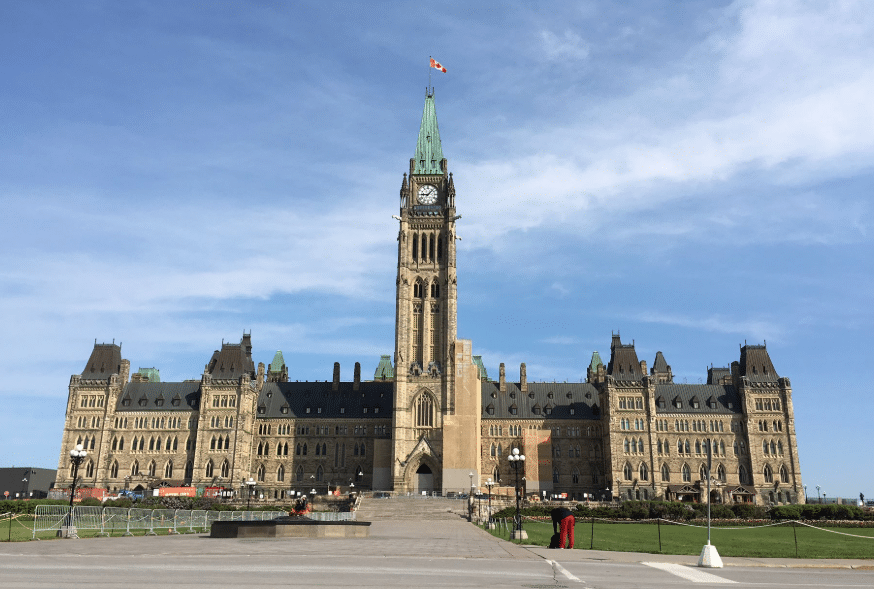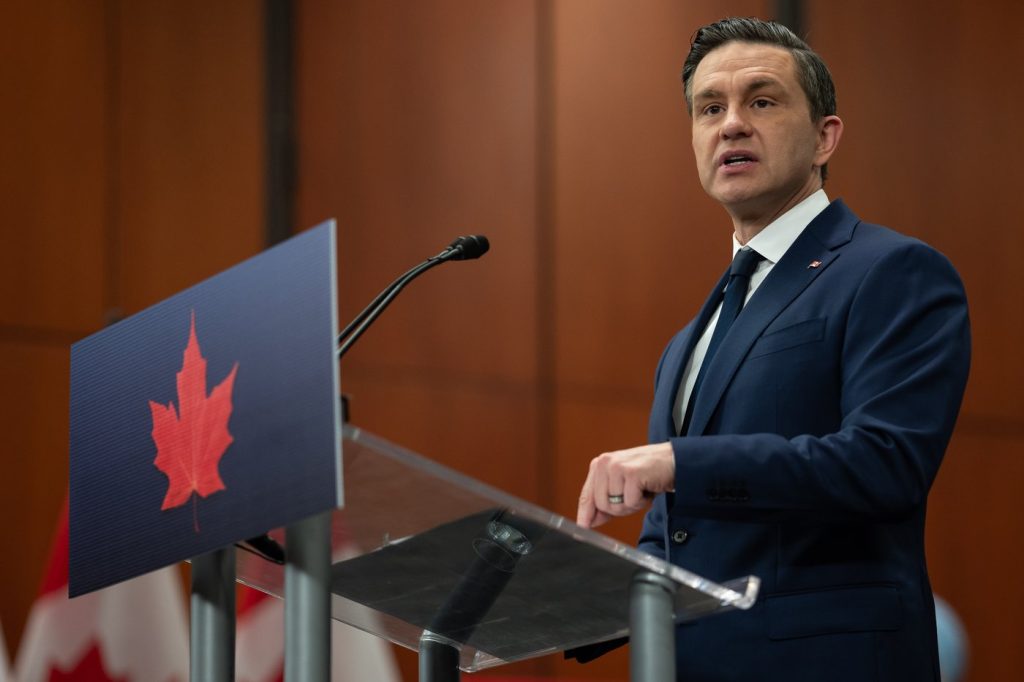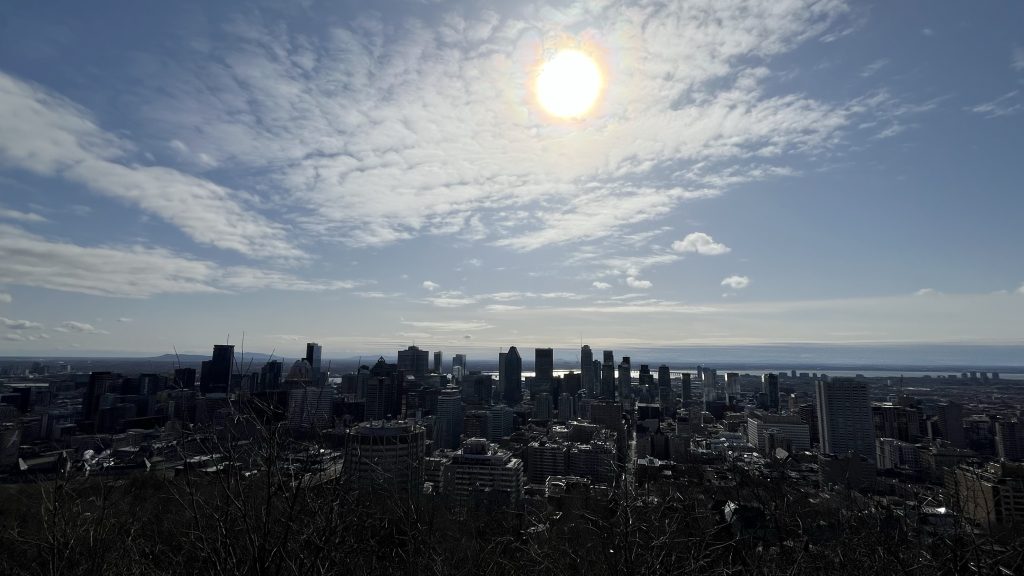Federal budget 2022: Focus on housing amid affordability challenges

Posted April 7, 2022 4:07 pm.
Last Updated April 7, 2022 5:30 pm.
As Canadians struggle with the soaring cost of living, the federal government is putting a major focus on the housing file in Budget 2022.
Tabled April 7, Budget 2022 is expected to pass without issue, given the Liberal Party’s supply and confidence agreement with the NDP.
Uncertainty played a big role in the formation of this fiscal plan, a senior government official said Thursday, noting that uncertainty comes from the ripple effects of Russia’s invasion of Ukraine, climate challenges, and record inflation rates.
It’s the simultaneity of those events that exacerbates the situation, they said, adding the cost of living has been a struggle too many Canadians have been facing.
Entering the COVID-19 pandemic, Canada was already dealing with affordability challenges, the official admitted. As we look to shifting to a life post-pandemic, all while continuing to deal with the effects of global events, the Liberal government says it’s hoping to help ease some of that burden.
However, Budget 2022 doesn’t outline any immediate relief for things like the price of gas or groceries. Instead, it focuses on plans that would help with affordability challenges on a more long-term timeline.

Despite the rate of inflation continuing to grow, the government says its deficit is expected to decline to two per cent this year, down from 4.6 per cent last year. It foresees the decline to continue to 0.3 per cent in 2026/27.
The finance minister is resolute: all debts will be paid off.
“Our deficits must continue to be reduced. The pandemic debt we incurred to keep Canadians safe and solvent must—and will—be paid down,” Finance Minister Chrystia Freeland said Thursday.
Housing and affordability
Budget 2022 includes billions of dollars in new spending to put toward housing affordability over the coming five years. This comes at a critical time for many Canadians who have been priced out of real estate markets due to skyrocketing price tags amid lower interest rates – which are set to level out as the country moves on its path to a post-pandemic world.
However, supply amid increasing demand remains an issue.
“We will invest in building more homes and in bringing down the barriers that keep them from being built. We will invest in the rental housing that so many count on. We will make it easier for our young people to get those first keys of their own,” Freeland said.
The federal government is proposing a few measures.
Addressing housing supply in Budget 2022
“In putting together this budget, we were very mindful of elevated inflationary pressure,” said Freeland, noting this is one that “focuses on expanding the supply side of the economy.”
In its fiscal plan, the federal government is looking to double the construction of new homes over the next decade.
Budget 2022 is proposing an additional $4 billion over five years to launch the Housing Accelerator Fund, which aims to help municipalities across the country to build new housing units. This fund would provide supports, like an “annual per-door incentive or upfront funding” for housing plans and delivery to help speed up development.
Freeland says the fiscal plan is intentionally focused on housing supply, adding the main challenge people face in the real estate market has to do with that specifically.
“We tried to be really creative and put forward ways that the government can work” with municipalities, provinces, and territories to increase supply, the finance minister said.
“There is no single policy in a single budget that will mean as of tomorrow or as of next week that every single Canadian will be able to afford a home in the neighbourhood they want,” Freeland admitted.
First-time buyers
To help Canadians break into the housing market, Budget 2022 includes the introduction of the Tax-Free First Home Savings Account, which aims to help people buy their first home. The Liberals estimate the account could give prospective buyers the ability to save up to $40,000, adding the account would act like an RRSP, with contributions tax-deductible and withdrawals for a first home non-taxable, like a TFSA. In addition to this, the government proposes to double the First-time Home Buyers’ Tax Credit to $10,000, “providing up to $1,500 in direct support to home buyers,” applying to homes that are bought on or after Jan. 1, 2022.
Budget 2022 says the government plans to work with financial institutions to ensure Tax-Free First Home Savings Accounts can be opened and that people can start contributing to them in 2023.
The minority government estimates the account will “provide $725 million in support over five years.”
Foreign buyer ban
Budget 2022 introduces the Liberal government’s intention to introduce a ban on foreign investments in Canada’s housing market. The proposed restrictions would “prohibit foreign commercial enterprises and people who are not Canadian citizens or permanent residents from acquiring non-recreational, residential property in Canada for a period of two years.”
Budget 2022 says foreign money in Canadian real estate has been “fuelling concerns about the impact on costs in cities like Vancouver and Toronto” for years, adding it’s also added to Canadians’ worries about increasing prices across the country.
House flipping rule proposals
Another issue being highlighted by the latest budget is property flipping. The practice, which has been flagged by many across Canada for years, “can unfairly lead to higher housing prices,” Budget 2022 notes, adding some people may even be “improperly reporting their profits” from flipping homes to “pay less tax.”
The fiscal plan proposes the introduction of new rules which would apply to individuals who sell a property they have held for less than a year – 12 months. These individuals would be “subject to full taxation on their profits as business income,” with the measures applying to residential properties that are sold on or after Jan. 1, 2023.

Budget 2022 notes there would be exemptions to these rules, such as for Canadians who need to sell the property due to “certain life circumstances,” like a death, disability, family or economic changes. The government plans to consult Canadians on the rules.
“This new measure will ensure that investors who flip homes pay their fair share while protecting the current, vitally important, principal residence exemption for Canadians who use their houses as homes,” the budget explains.
Property flipping is an issue the Liberals have been questioned on in the past. A now-Liberal-MP in the Vancouver area came under fire in 2021, prior to the federal election, for his involvement in a number of rapid-fire deals over the last decade in Vancouver’s hot housing market.
Home Buyers’ Bill of Rights
As competition remains cut-throat in many regions of Canada, some home buyers have been forced to make difficult decisions to secure a purchase.
Budget 2022 notes the federal government will work with provinces and territories over the coming year to create and bring in a Home Buyers’ Bill of Rights. The bill, which the government first unveiled initial plans for last year, would protect prospective buyers from unfair practices, like blind bidding or waiving inspections. The budget also proposes bringing forward a plan to end the practice of blind bidding, which, according to the Liberal Party, is a practice that “prevents bidders from knowing the bids of other prospective buyers, and ultimately drives up home prices.”
Housing for Indigenous communities
Building on previous spending, the 2022 fiscal plan proposes $4.3 billion over seven years to improve and expand Indigenous housing in Canada. This is on top of more than $2.7 billion invested since 2015, the Liberals say. The government also plans to allocate $2 billion from the $20 billion already set aside for the First Nations Child and Family Services program to target the needs of Indigenous children once a settlement agreement is reached. In total, Budget 2022 foresees spending on improving and expanding Indigenous housing hitting $6.3 billion over seven years.
Housing for those most vulnerable
The minority government is proposing to extend the Rapid Housing Initiative for a third round to help get more affordable housing units built. Budget 2022 outlines an additional $1.5 billion over two years to the Canada Mortgage and Housing Corporation, which the Liberals expect will “create at least 6,000 new affordable housing units.” The budget notes at least 25 per cent of the funding will go to women-focused housing projects.
When it comes to rentals, Budget 2022 announces the Liberals’ “intent to reform the Rental Construction Financing Initiative,” focusing on affordability and energy efficiency. The budget also announces plans for new requirements and incentives to “ensure that rental units built through (the Rental Construction Financing Initiative) are more affordable, that people can reduce pollution, and save on energy bills.” The Liberals project that this will also help Canada continue to progress on its goals of meeting climate projections.
The initiative’s target is to have “at least 40 per cent of units it supports provide rent equal to or lower than 80 per cent of the average market rent” in the community the project is in.
Financial support for ‘Canadians experiencing housing need’
As part of $4 billion in joint funding announced in 2020 through the Canada Housing Benefit, Budget 2022 proposes $475 million this fiscal year to provide people who are “facing housing affordability challenges” with a one-time $500 payment. Budget 2022 says more specific details will be provided “at a later date.”
Budget builds on ongoing child care plans
Child care was a key part of the Canadian government’s previous budget. In the 2022 fiscal plan, the minority Liberals are proposing to continue building on past promises, adding the latest budget proposes $625 million over four years, starting the next fiscal year, to Employment and Social Development Canada for an Early Learning and Child Care Infrastructure Fund. This is in response to requests from provinces and territories for support in implementing the system.
“This funding will enable provinces and territories to make additional child care investments, including the building of new facilities,” the fiscal document reads.
Public health spending in Budget 2022
Budget 2022 does not outline any significant new spending for pharmacare, which has been identified as one of the key priorities for the NDP in its agreement to prop up the Liberal minority government until the next election.
A senior government official says much of the initial rollout costs for some of the health care priorities are already included in the budget, and that the plan meets current expectations.
Dental care
Budget 2022 proposes $5.3 billion in funding over five years, and $1.7 billion ongoing, when it comes to dental care for Canadians. Listed as one of the key priorities of the Liberal-NDP agreement, dental care plans will begin with people under the age of 12 this year, and expand to under-18s, seniors, and people living with disabilities in 2023. The dental plan would be restricted to families with an annual income of less $90,000 and is expected to be implemented in full by 2025.
Freeland assures funding will be available for the years to come, adding the federal health minister is already at work to develop the plan further.

Pharmacare
Dental care and pharmacare are treated differently in Budget 2022, the official noted, adding there’s still much work to do on pharmacare and that realistic figures were not possible to include in this fiscal plan for now.
“To ensure that no Canadian has to choose between the prescription drugs they need and putting food on the table, the federal government will also continue its ongoing work towards a universal national pharmacare program,” the budget reads, in part.
It goes on to outline intentions to table and have passed a Canada Pharmacare bill by the end of 2023. Upon passing, Budget 2022 says the Canadian Drug Agency will be tasked with developing a formulary of essential medicines and a bulk purchasing plan.
Health care, pandemic recovery
“We know that the time for extraordinary COVID supports is over,” said Freeland, who noted the government is reviewing its spending.
Despite repeated requests from provinces and territories, the federal Liberals do not outline any additional spending on the Canada Health Transfer. Previously, the minority government announced its intent to provide $2 billion through a top-up to the CHT to address surgery and procedure backlogs created by the pandemic, building on $4 billion in spending provided in 2020-21.
It’s estimated that nearly 700,000 medical procedures were either cancelled or delayed because of COVID-19 cases putting pressure on health care systems and hospitals.
In addition to working with provinces and territories to get procedures back on track, Budget 2022 also proposes $20 million over five years, starting this year, to support research on the long-term effects of COVID-19 infections, as well as the virus’ impacts on wider systems.
With the pandemic also having taken a major toll on the mental health of Canadians, the fiscal plan proposes $140 million over two years for the Wellness Together Canada portal to provide people with tools and services to support well being.
Opioid crisis
Opioid-related deaths surged since the beginning of the pandemic, fueling devastation in many communities across Canada. Record deaths have been reported in many jurisdictions, including B.C., where a public health emergency remains in place amid the ongoing crisis.
The Liberals are proposing $100 million over three years for the Substance Use and Addictions Program to provide Canadians with harm reduction, treatment, and prevention supports. This is in addition to the $116 million outlined in Budget 2021 as well as the $66 million in the 2020 Fall Economic Statement.
Climate action
2021 marked a devastating year for many parts of Canada, driven by the climate crisis. Wildfires, floods, and extreme temperatures are just some of the many climate-related events that hit Canadian provinces and territories. Floods in B.C. in November put even more pressure on the supply chain after major highways were washed out, disconnecting the pacific from direct access to the rest of the country.
Budget 2022 outlines continuing plans in fighting climate change and protecting the environment, providing some “new incentives for the development of clean technologies and carbon capture, utilization, and storage.”
In an effort to get more Canadians behind the wheel of zero-emission vehicles, the budget outlines plans to invest more than $3 billion to make such vehicles more affordable and to build more charging stations across the nation.
The Canadian Growth Fund, meanwhile, is a new program to “help attract tens of billions of dollars in private capital towards building a net-zero economy by 2050.” The Liberals home the fund will help the country meet its economic policy goals to reduce emissions, diversify the economy, and “support the restructuring of critical supply chains in areas important to Canada’s future prosperity.”
Taxes on banks
As part of its budget, the minority government is proposing a one-time 15 per cent tax on taxable income over $1 billion for banking and life insurer groups as part of a temporary Canada Recovery Dividend. The dividend on the 2021 tax year would be paid in equal installments over five years, the budget explains.
The budget also proposes a permanent increase on the corporate income tax rate of banking and life insurance groups above $100 million by 1.5 percentage points, “such that the overall federal corporate income tax rate above this income threshold will increase from 15 per cent to 16.5 per cent.”
The Liberals estimate these measures will result in about $6.1 billion raise over five years. The permanent tax measures is expected to raise $445 million ongoing.
Ensuring a more fair tax system was among the demands listed by the NDP as part of its deal with the Liberals.
Defence spending
The latest budget provides more than $8 billion in new funding over five years to reinforce Canada’s national defence. The money is expected to bolster the country’s global contributions as well as the capabilities of the Canadian Armed Forces.
The fiscal plan outlines a review to update the current defence policy. It is expected to focus, in part, on the size and capabilities of the CAF, as well as look at the military’s roles and responsibilities, ensuring it has the resources needed to support Canadians here and contribute to global operations.

The budget also continues to build on work to support culture change in the Armed Forces.
Meanwhile, as Russia’s invasion of Ukraine continues, Budget 2022 proposes to provide further military aid to Ukraine with an additional $500 million this fiscal year. So far, Canada has already committed about $145 million in humanitarian assistance to Ukraine, as well as $35 million in development assistance. Budget 2022 plans to offer up to $1 billion in new loan resources to the Ukrainian government at the International Monetary Fund (IMF) so that it can “continue to operate.”








